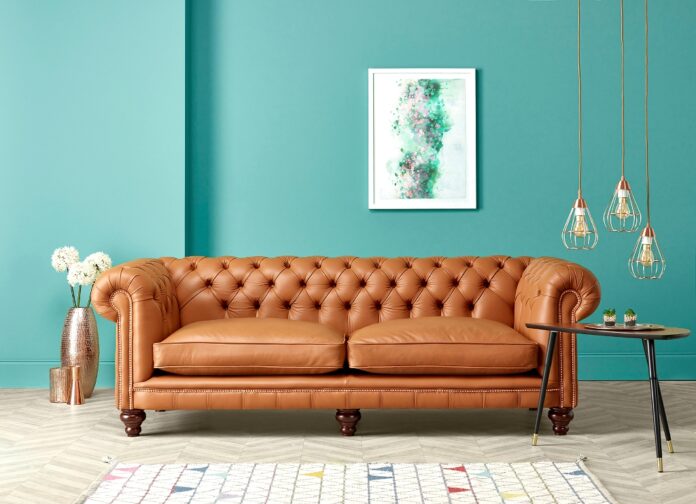You’ve invested in a beautiful hand crafted Chesterfield Sofa, but how do you keep it looking it’s best?
Fear not, we’re imparting our expert advice on you, making sure that your Chesterfield stays in tip-top condition.
1. Expect Wear
We know this sounds silly, but bear with us.
We understand sofas, and what these mean to us. The hub of the house, our sofas see us at our best and definitely see us at our worst. From curling up with a good book to sprawling out for an impromptu nap and all the movie nights, girly nights and gaming sessions in between; it’s safe to say they see their fair share of use.
Leather is particularly sensitive to signs of wear overtime. When cared for properly, leathers will show this wear and tear in the form of unique ageing characteristics, which all quality leathers will develop overtime.
Maintaining the care of your Chesterfield will help keep any wear to a minimum, letting your leather age perfectly and develop this unique patina.
2. Stay Clear of Heat
One sure fire way for leather to age prematurely is prolonged heat exposure. To avoid this, keep your Chesterfield, or leather furniture away from direct heat such as electric and gas radiators, open fireplaces or other heat sources.
Leather creamers are a brilliant way to inject some life back into your leather Chesterfield. These work in the same way a moisturizer works on our skin, rehydrating it and restoring the soft suppleness to quality leathers. Depending on the leather you have chosen or are considering for your furniture, its needs might vary so it’s best to do some research into leather care kits and the options available.
3. Watch What You Wear
Clothing and the embellishments that come with some of our favourite wardrobe staples, can cause extra damage to leathers. Areas where the leather sees more use such as the seats and arms will naturally begin to show signs of wear. Buttons, zips, studs and other elements used in garments can worsen this damage, taking it from naturally ageing leather to damaged and scuffed furniture.
It’s worth noting, these items aren’t likely to damage the leather badly from one encounter but prolonged exposure can weaken your leather considerably.
Dyes used in denims can also transfer onto surfaces, particularly when sat for long periods of time so if you’ve got your eye on a lighter leather or already have one in your home it might be worth keeping denims to a minimum.
4. Regular Cleaning
Leather like most surfaces, catches a certain amount of build up from daily use, which is completely normal. Simply wiping the leather down with a slightly damp and warm cloth can keep this build up to a minimum, helping you keep your sofa in great condition. Paired with the other tips we’ve discussed, regular and consistent maintenance can help your sofa stay looking brand new for years on years.
5. Pick Your Leather Carefully
Leathers and the way these are processed and treated possess various traits and attributes that make them perform differently, as well as creating vast differences in cost.
Quality manufacturers, will sources quality leathers, to put it simply.
However, these leathers will cover a multitude of budget options, with different leathers possessing different qualities that influence this price.
The most robust leathers are corrected grains, often categorized as antique leathers. These have a sealed top coat and are resistant to scaring and marking during use.
The least robust and most likely to scar and mark are fully aniline leathers, these don’t have the benefit of a top coat and are unsealed.
If you have a busy home, with children and pets we recommend sticking to a corrected grain leather, as this will stand the test of time and prove it’s worth whatever life throws at it.












